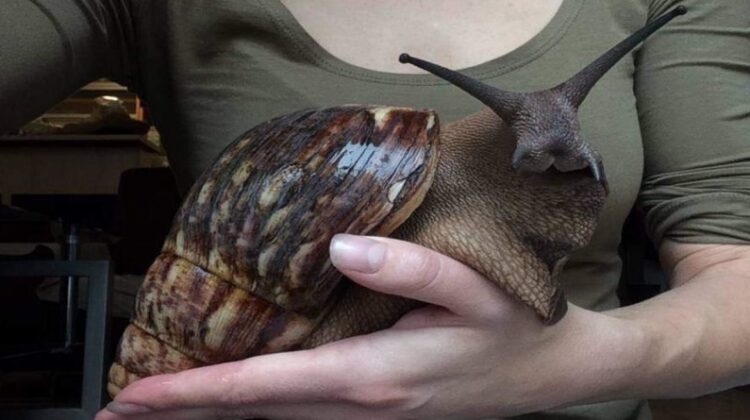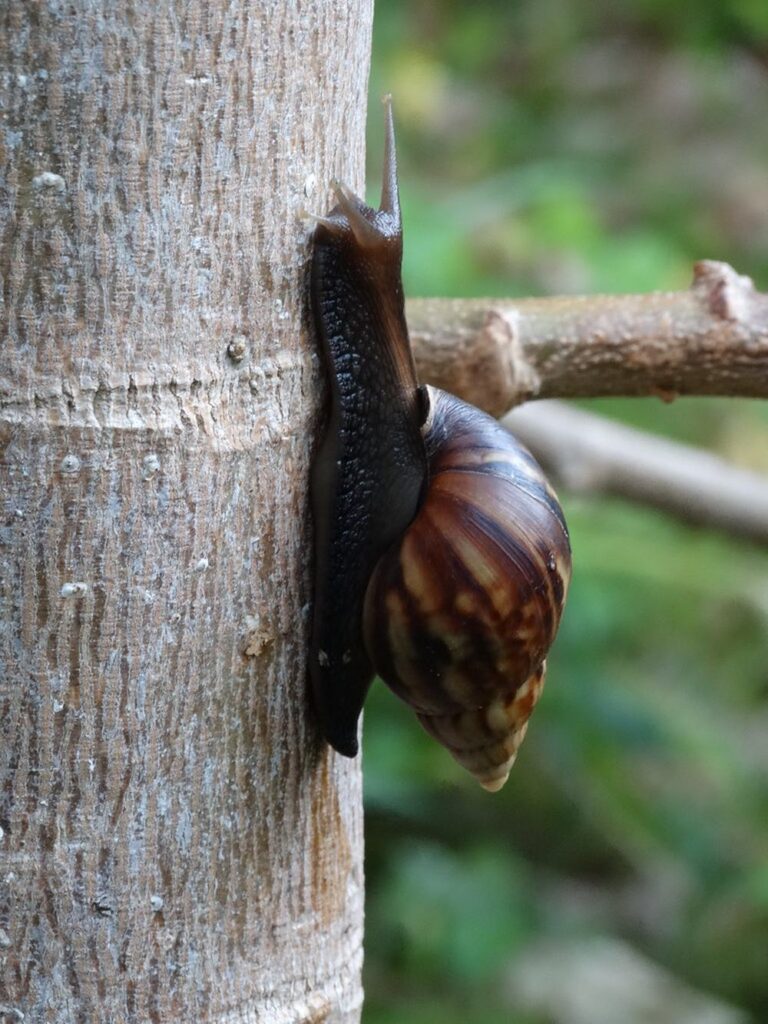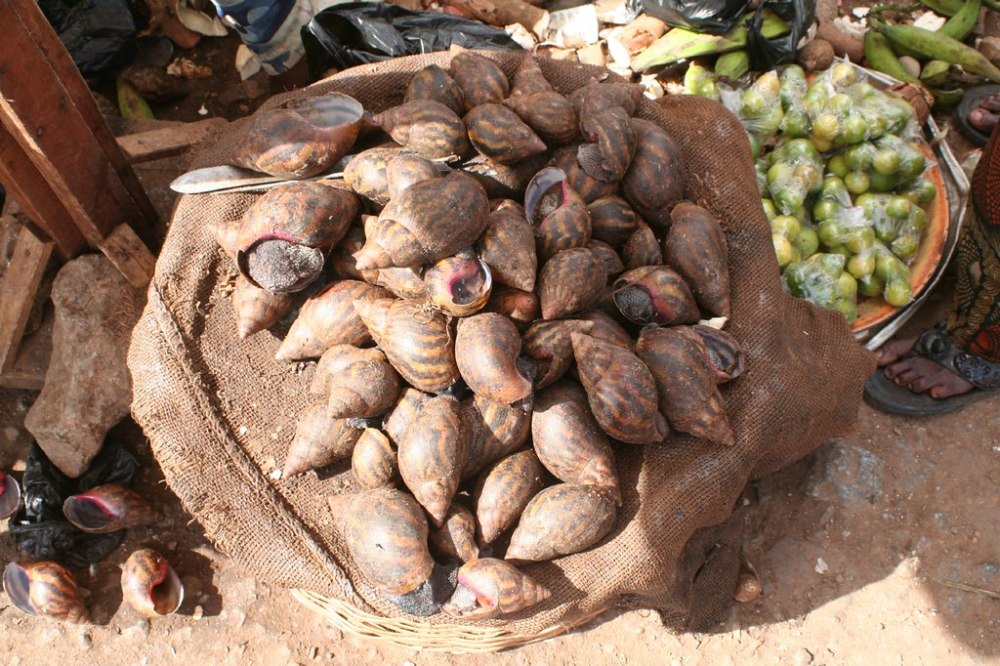
This giant snail is six times the size of a garden snail: it can even grow as long as a human arm from hand to elbow!
The Giant African Land Snail is the largest among all land snails in the world (the common name actually refers to three giant species in the family Achatinidae: Achatina achatina, Archachatina marginata and Lissachatina fulica).
Even after reaching adulthood, these snails will never stop growing.
Although their growth may slow down a bit after a certain age, they will keep getting bigger nonetheless, until they die. Full-grown adults can usually reach 2.8 inches (7 cm) in diameter and 7.9 inches (20 cm) in length. Some grow even bigger.
The largest recorded specimen was collected on a snail safari in Sierra Leone in 1976.
When fully extended, it measured 1 feet and 3.5 inches (39.3 cm), with a shell length of 10.75 inches (27.3 cm).
It was called Gee Geronimo and The Guinness Book of Records listed it as the largest snail on Earth. However, its owner got divorced after their house got so full of snails that they had some even under their bed in a bucket.
Each snail can live up to 10 years, and they can reproduce pretty quickly. Like most land snails, Giant African Land Snails are hermaphrodites and adults lay as much as 1200 eggs a year.
Giant African Snails originated in East Africa, but can be found in much of the world today.
These giant snails don’t migrate deliberately, but people have collected them as pets and they have escaped, or have been brought over to other countries on cargo ships. Since an adult is capable of laying hundreds of eggs at a time, it was quite easy for the species to spread in countries where it’s not native.

The giant snail prefers humid forest areas, but it’s also comfortable along coasts, rivers, scrublands, wetlands, and even in cities.
It has no particular problem with colder climates either, since it’s able to survive cold temperatures in a semi-hibernation state.

As a herbivore, its diet consists of a huge variety of plants. According to biologists, the Giant African Land Snail can consume over 500 different kinds of plants.
However, to fortify its shell, sometimes it also eats cement and bones for their calcium content.
While keeping giant snails as exotic pets is a popular trend in some countries, they are considered invasive pests in most places where they occur. Due to their large appetite for various plants, their presence can be a huge risk for farms, but they can cause damage by eating off plaster and stucco from structures as well.

They also pose a potential health risk to humans by carrying the parasite rat lungworm, that is known to cause meningitis.
The species was established in the United States in 1936 through imports. Originally, they were intended for educational purposes, and to be pets, but their population got out of hand very fast. It was eradicated twice in Florida.
The first eradication effort started in the 1960s and took 10 years and 1 million dollars.
They reappeared in 2011 and went through another eradication campaign that got completed in 2021, with no recorded sightings after 2017.

The U.S. Department of Agriculture prohibits importing or owning Giant African Snails due to their risk to agriculture and human health. It remains a threat in Hawaii and the Caribbean.
In other parts of the world, however, Giant African Land Snails command high prices as a delicacy. If cooked properly, the protein and iron-rich snails are edible. Some are collected in the wild, but others are farmed in “snaileries”. They are usually served as a bar snack on toothpicks, or stewed with peppers and rice.
Either way, they are a sight to behold.

Leave a Reply